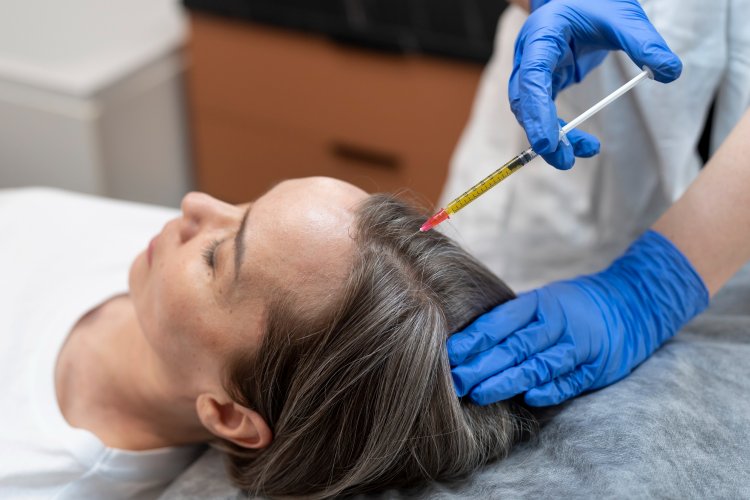The Stem Cell Revolution: Redefining Beauty through Hair Regeneration
Hair loss, affecting millions worldwide, has led to a burgeoning demand for effective hair restoration techniques. Stem cell hair transplantation is an emerging method that utilizes the regenerative capabilities of stem cells to stimulate hair growth. Unlike traditional methods, this technique promises natural results with less invasiveness and faster recovery times. This comprehensive article delves into the intricacies of stem cell hair transplantation, exploring the procedure, benefits, challenges, and ongoing research.

Understanding Stem Cells in Hair Transplantation
Stem cells are unique in their ability to differentiate into various cell types and self-renew, making them invaluable in regenerative medicine. In the context of hair transplantation, stem cells can potentially regenerate hair follicles and promote new hair growth. There are several types of stem cells used in this process:
Mesenchymal Stem Cells (MSCs)
Found in various tissues, including bone marrow and adipose tissue, MSCs have shown promise in regenerative medicine due to their ability to differentiate into a variety of cell types.
Adipose-Derived Stem Cells (ASCs)
These are extracted from fat tissue and are rich in regenerative properties, making them suitable for hair restoration.
Epidermal Stem Cells
Located in the basal layer of the epidermis, these stem cells play a crucial role in skin and hair follicle regeneration.
The Stem Cell Hair Transplantation Procedure
Step 1: Extraction of Stem Cells
The process begins with the extraction of stem cells from the patient’s body. This involves a minimally invasive procedure, often utilizing a small liposuction technique to harvest adipose tissue from areas such as the abdomen or thighs. In some cases, bone marrow aspiration is performed, though this is less common due to its invasiveness.
Step 2: Isolation and Culturing of Stem Cells
Once the tissue is harvested, it is processed in a laboratory to isolate the stem cells. This involves:
- Centrifugation: Spinning the harvested tissue to separate the stem cells from other cellular components.
- Enzymatic Digestion: Breaking down the tissue matrix to release the stem cells.
- Culturing: In some cases, stem cells are cultured to increase their numbers. This involves growing the cells in controlled conditions to multiply them, ensuring a sufficient quantity for effective transplantation.
Step 3: Preparation of the Scalp
The scalp, particularly the areas affected by hair loss, is prepared for the procedure. This involves cleaning the scalp and administering local anesthesia to ensure patient comfort. The target areas are then marked to guide the injection process.
Step 4: Injection of Stem Cells
The isolated stem cells are injected into the scalp using fine needles. The injections are strategically placed in the dermal layer of the scalp, where hair follicles reside. The precision of the injections is crucial to stimulate the hair follicles effectively.
Step 5: Post-Procedure Care
After the procedure, patients are given specific post-care instructions to ensure optimal results:
- Avoiding physical exertion: To minimize swelling and promote healing.
- Scalp care: Gentle washing of the scalp to prevent infection.
- Follow-up appointments: Regular check-ups to monitor progress and address any concerns.
Advantages of Stem Cell Hair Transplantation
- Minimally Invasive: The use of injections rather than surgical grafts reduces trauma to the scalp and associated recovery time.
- Natural Results: By stimulating the patient’s own hair follicles, the results look more natural compared to traditional methods.
- Reduced Downtime: Patients typically resume normal activities sooner than those undergoing traditional hair transplant surgery.
- Long-Term Potential: Stem cells can promote ongoing hair growth, potentially providing more durable results.
Challenges and Considerations
- Cost: Stem cell procedures can be expensive due to the complexity of the technology and the need for specialized laboratory processing.
- Regulatory Approval: As a relatively new technique, stem cell hair transplantation may face regulatory hurdles and is not universally available.
- Efficacy: While promising, the long-term efficacy and safety of the procedure are still under investigation through clinical trials and research studies.
Current Research and Future Directions
Ongoing research is vital to fully realize the potential of stem cell hair transplantation. Key areas of investigation include:
- Optimization of Stem Cell Types: Determining which stem cell types (e.g., MSCs, ASCs) provide the best results for hair growth.
- Enhancement of Isolation Techniques: Improving methods to isolate and prepare stem cells more efficiently.
- Long-Term Studies: Conducting long-term studies to assess the durability and safety of the results.
- Combination Therapies: Exploring the use of stem cells in conjunction with other treatments, such as PRP (platelet-rich plasma) therapy, to enhance outcomes.
In conclusion, stem cell hair transplantation represents a groundbreaking advancement in the field of hair restoration. By leveraging the regenerative capabilities of stem cells, this technique offers a promising alternative to traditional hair transplant methods, with potential benefits including minimal invasiveness, natural results, and shorter recovery times. While challenges remain, ongoing research continues to refine and improve the procedure, paving the way for more widespread adoption and potentially transformative outcomes for those experiencing hair loss. As the science progresses, stem cell hair transplantation may become a standard approach in the fight against hair loss, offering hope and solutions to millions worldwide.
Disclaimer
The information provided in this article is for educational purposes only and should not be considered medical advice. If you have any health concerns or are experiencing symptoms, it is important to consult with a healthcare professional, such as a doctor or clinic, for proper diagnosis and treatment. Always seek the advice of your doctor or other qualified health provider with any questions you may have regarding a medical condition. Do not disregard professional medical advice or delay in seeking it because of something you have read in this article.
Hashtags
#HairTransplant #StemCells #RegenerativeMedicine #HairLoss #MedicalAdvancement
What's Your Reaction?





















